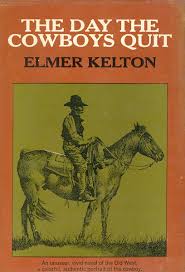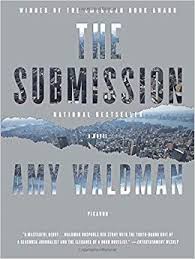
The Day the Cowboys Quit
Order Instructions:
The four page typed book report over “The Day The Cowboys Quit“. The book report may be a general review of the material, a report on a particular topic of interest from the book, or the contributions of one or more significant characters from the story,
and must include at least two primary sources of information which are cited in the report.
Format Instructions:
1. Includes a cover/title page.
2. Begins with a standard introductory paragraph.
3. Typed/double spaced with a font no greater than 14.
4. One inch side margins, two inch top margin, one inch bottom margin.
5. Minimum of four pages excluding cover sheet and citation page.
6. Includes a minimum of two citations from primary sources.
7. No more than three direct quotations from the book (quotations must be cited).
SAMPLE ANSWER
The Day the Cowboys Quit
Introduction
The book ‘The Day the Cowboys Quit’ is a book written by Elmer Kelton that describes a strike that happened at Old Tascosa in the Texas Panhandle in 1883. The story is set against the background of the great Canadian River Cowboy strike of the 1883. This book is crucial to a reader by giving a benefit of thought of what was happening at this period. The book also brings forth the complexity and excitement of the main character in the story, Hugh Hitchcock. In addition, the book has an interest in describing a specific interest inside changing dynamic from the new West. The book represent on how cattle ranching was used by corporations and syndicates to make profits out of the cowboys. As reader goes through the book, elements of complexities in making both great and damaging choices will be seen mostly from the main character, Hitchcock. Therefore, the following discussion will engage in describing a general view of the book.
General review
The tale in ‘The day the Cowboys Quit’ is a true event that happened in the Texas Panhandle in 1883. The strike that is happening at this time by the cowboys was initially precipitated by activities that happened before in regarding the relationship between the rancher owners and the cowboys themselves. Elmer Kelton describes the cowboys as honest and true men who worked diligently to the ranch owners. Before even the strike was planned, the cowboys had the opportunity to own some cattle of which they had a huge turnover from them as they controlled cattle farming inside the American West. The rancher owners allowed cowboys to own cattle because they knew that cowboy’s job was a hard one, and there was a need to give bonuses to those who exemplified hard work and diligence (Kelton 54). In addition, the cowboys had the chance to own horses on their own. The cowboys also enjoyed the privileges of changing their owner’s brands to their own brand. However, these cowboys soon discovered that the ranch owners were not happy with the fact that they owned cattle. The source of the problem can be attributed to three men: the old time land rancher, the big rancher manager and Hitchcock who is seen trying to accumulate the most cattle. All these men have one thing in common: greed. The story goes that the ranch owners and managers were bitter with the cowboys as the cowboys managed more in the farming industry (Kelton 112). They therefore devised way of coming with laws to counteract this trend. . This is what made the cowboys angry and plotted a strike to deal with the cattle owners. The ranch owners started viewing the cowboys as pieces of larger puzzle of the ranch and not as people of worth and value. However, not all ranch owners were against the cowboys on owning the cattle. For instance, Charlie, a ranch owner, differed to Selkirk by arguing that the cowboys were good people, and there was no reason whatsoever to deny them these privileges. However, his position was changed immediately when Hitchcock informed him that Law, (hitch friend who is also a cowboy), stole his (hitch) cattle.
In the beginning, the cowboys were not very determined about the strike, but as time progressed, emotions and felling became increased in severity. Some cowboys were not interested in engaging in the strike, for instance, Hitch, working under Charlie, was against the strike. During all time, Hitchcock was an undercover to the other cowboys, and became its unofficial leader. As the leader of the group, Hitchcock proposed that the ranch owner (Charlie) to pay them fifty dollars a month and send each proposal to other rancher. However, this proposal was ignored as Serkik refused to receive the statement on payments (Kelton 145). This made the cowboys to become weaker and weaker as food issue became a problem. Problems were heightened when some strikers started leaving the group. In fact, Hitch himself decided to leave the group and become a small rancher. Later, Hitchcock was advised a fellow cowboy that Charlie was going to have the smaller brands declared illegal. Therefore, to act responsively on this statement, Hitch drove his cattle across the county line, but he was hit and his cattle were taken away. The spirit of rebellion was now rejuvenated in Hitch and as a result devised ways on how to get his herd of cattle back.
During this activities in searching his stolen cattle, Hitch was informed by a fellow cowboy that Law was about to be hanged by ranch owners for being found stealing cattle. He quickly sets to rescue his friend but found that Law had been already lynched by the time he arrived at the ranch. He opted to get assistance from sheriff who he found out that he had already quitted. The course of the strike changed by Hitch starting to campaign for the sheriff and as a matter of surprise he successfully won. He was now determined to avenge the death of Law, and consequently, he warranted for murder for person who hanged Law. However, his motive to punish the murderer was not meet as the jury listening to the murder case of Law had different opinion (Kelton 167). In the ‘court room’, one judge told Hitch that a retrial would of wasting time in getting justice to law, but reinforced Hitch’s statement that no vigilance justice would be tolerated. Revenge was manifested in the courtroom when Rascal (Serkirk’ cowboy) short Dodge, the new Sherriff, because his boss had not paid him what he owned him.
While Hitch is trying his best to evade new rules, the ranchers on the other hand are devising a strategic way to silence the strikers without using force. The officials of the ranchers started firing the cowboys on the spot. The rancher owners started luring the strikers to accept a slight increase in wages and fired those who declined the offer. To demonstrate that they were serious, the rancher owners continued with roundup plans by hiring replacement workers at temporarily increased wages (Kelton 234).The strike was now deeming to cease, as most of the replacement workers were actually the strikers who asked their respective bosses to resume work. In two months tome, the strike was much weakened due to many roundups occurred without incidents. Lack of enthusiasm and poor organization led the strike to finally fizzle out of its mission. It is observed that many cowboys went back to their actual stations while others drifted and got work at the less regulated outfits that still reigned farther to the south. The book ends dramatically with the workers left under the mercy of those who had earlier stripped their way of life
Works Cited
Kelton, Elmer. The Day the Cowboys Quit. New York: Forge, 2008. Print.
Kelton, E. The day the cowboys quit. New York: Tor. 2013. Print.
We can write this or a similar paper for you! Simply fill the order form!









